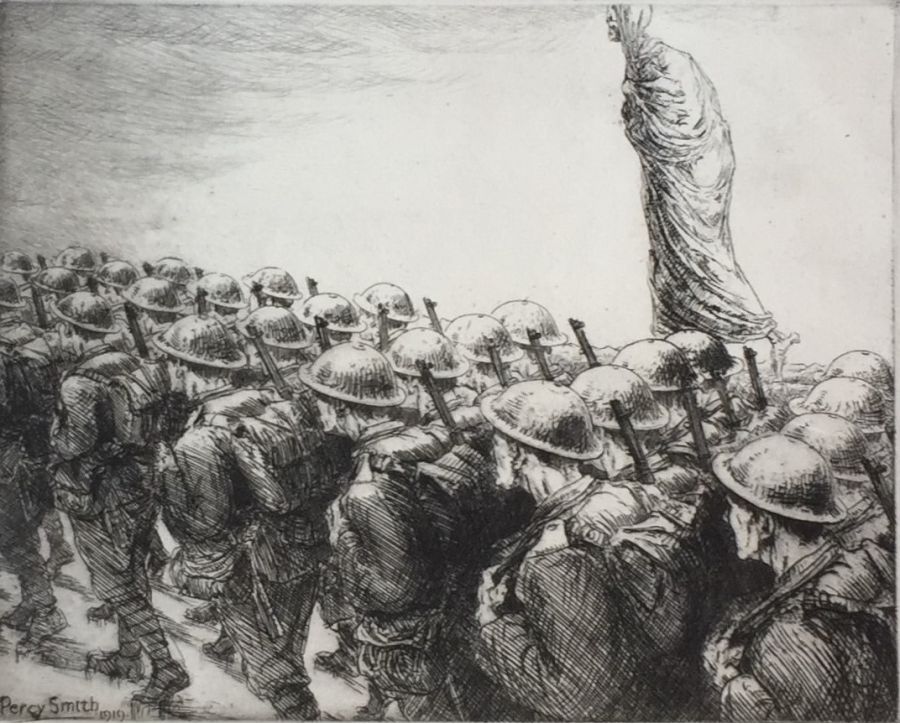The Dance of Death. 1914-1918. 1921. Portfolio of 7 etchings with drypoint. Sheet: 18 1/2 x 15 1/2. Edition 100, #36. Each proof signed and titled in pencil. $20,000 the set.
Campbell Dodgson, C.B.E., Keeper of Prints and Drawings at the British Museum wrote: " The Great War produced its harvest of etchings and lithographs of trenches, craters, barbed wire, shattered houses and blasted trees; but most of them were literal representations of things seen. Mr. Percy Smith, with imagination rare among English etchers, and akin to that of the draughtsmen of the northern Renaissance, combines with his sympathetic treatment of the soldier marching or fallen, crippled, maimed and agonised, the vision of an awful Presence, relentless, patient, callous, exultant' 'awed.' in a single etching that can never be forgotten, by one culminating horror. 'The Dance of Death, 1914-1918," is not a pretty set of etchings, but it is one of the most serious and memorable works of art inspired by the War. Print Collector's Quarterly 8 (1921): 324-25.
Percy John Delf Smith, RDI( Royal Designer for Industry), was a member of the Royal Society of Arts. A painter, calligrapher and book designer, he studied in London and exhibited at the R.A. He worked in Palestine (1932)and the United States, During World War I, Lieutenant Smith served with the Royal Marines Artillery in the trenches on the Western Front in France and later in Belgium. He lettered several warship plaques, one in Beccles Town Hall for the Minesweeper "HMS Brave."
He established the Dorian (later Dorno) Workshop & Studio, served as a consultant to Heinemann, and specialized in typographic design. He continued to pursue his work as a visual artist alongside his career as a typographer and calligrapher. Among his most notable projects was the four-year commission for the lettering of the Canadian War Memorial at Vimy Ridge. He was a Fellow or member of a number of professional societies of artists, as well as of the Society of Calligraphers and the Double Crown Club.



